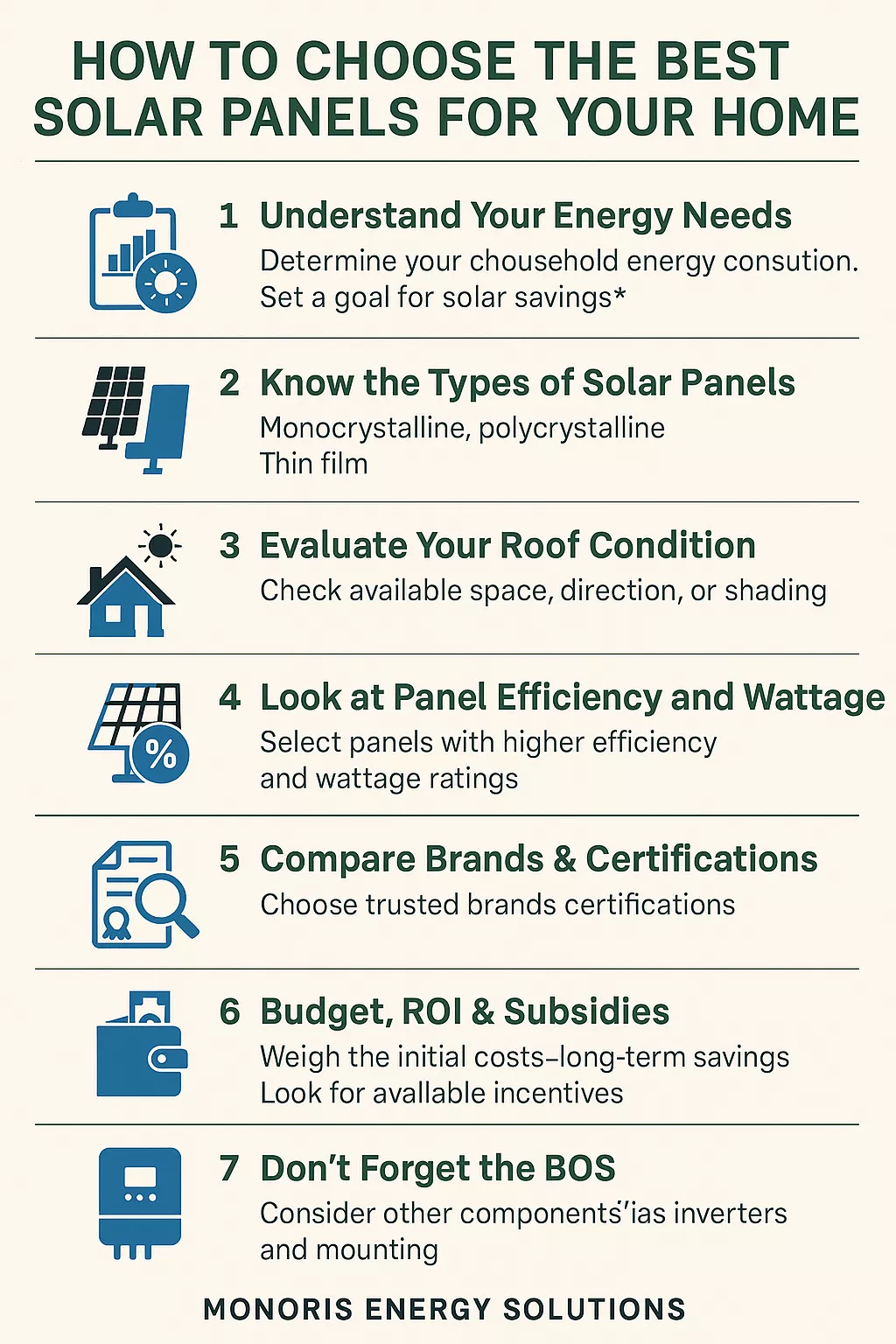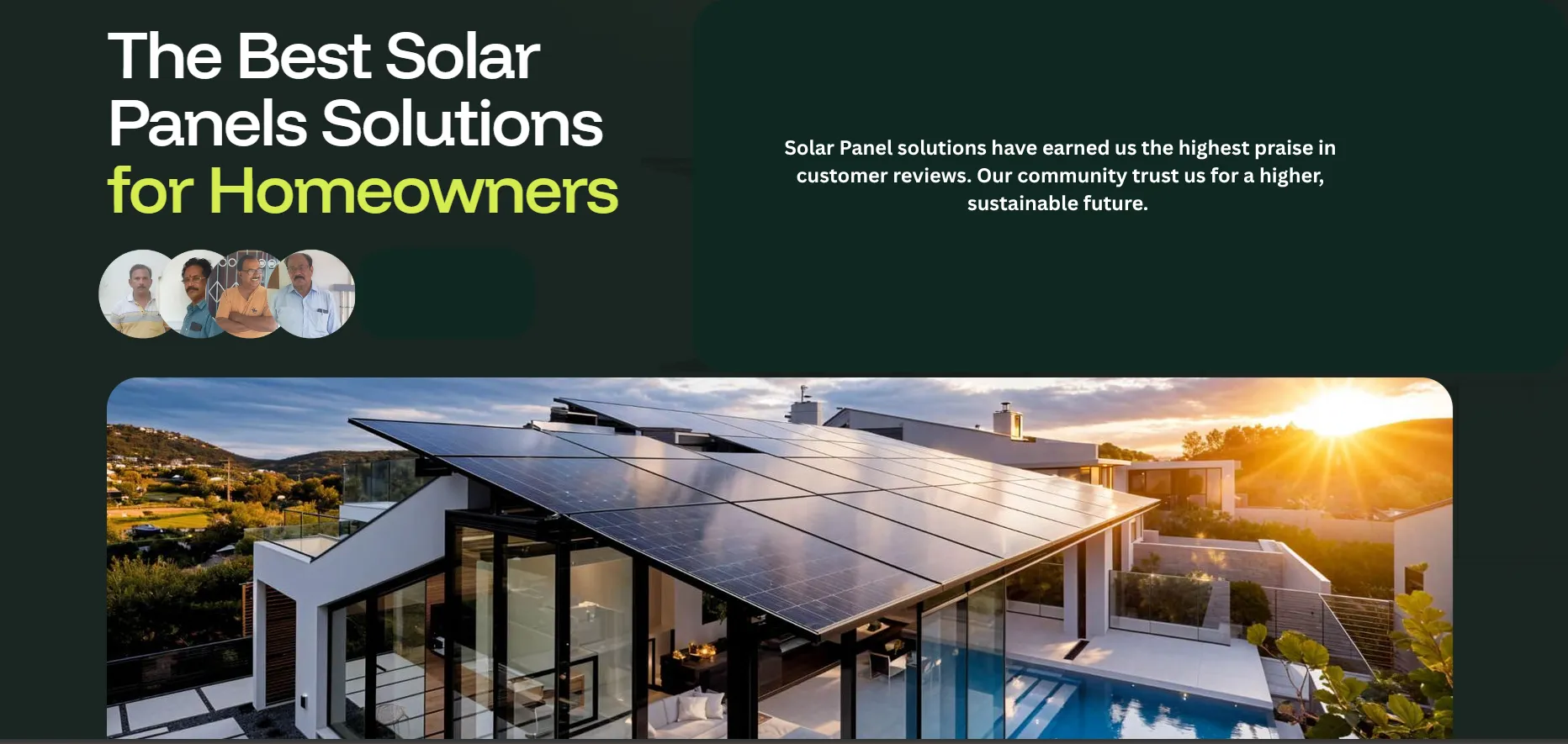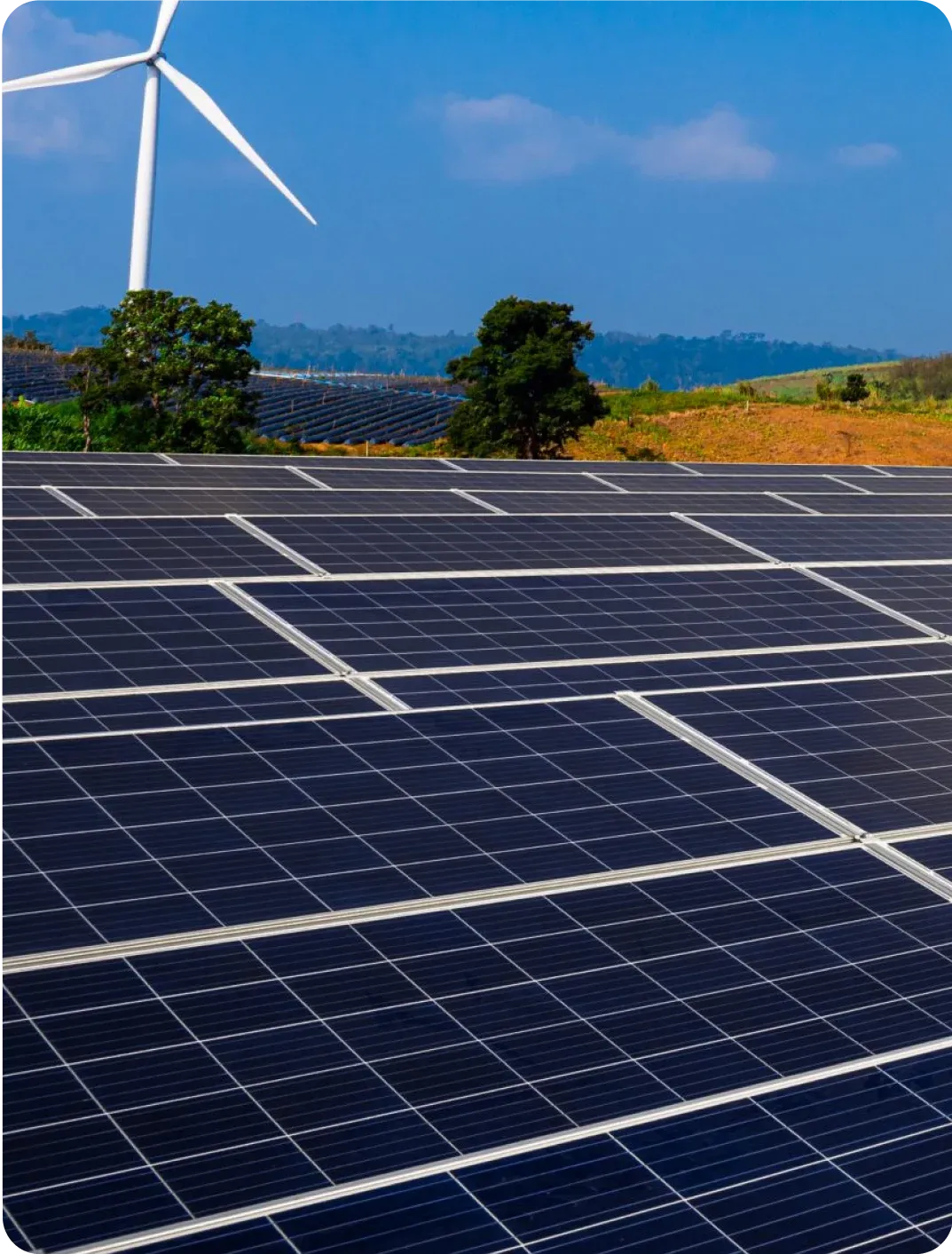As more homeowners turn to solar energy to reduce electricity bills and embrace sustainability, choosing the right solar panels becomes a critical decision. With so many options available in the market — monocrystalline, polycrystalline, bifacial, TOPCON bifacial, high-efficiency, and budget-friendly — how do you know which one is best for your home?
At Monoris Energy Solutions, with over 12 years of solar experience across India, we’ve helped thousands of families make the right solar choice. In this blog, we simplify the process and guide you on how to select the best solar panels for your residential needs.
✅ 1. Understand Your Energy Needs
Before selecting a panel, start with a clear idea of your household’s energy consumption.
Check your electricity bill: How many units (kWh) do you use monthly?
Identify your usage pattern: Day vs night, seasonal changes, appliance loads
Set a goal: Full load offset or partial savings?
🔍 Example: A household using 600 units/month may require a 5–6 kW solar system.
🔎 2. Know the Types of Solar Panels
| Type | Efficiency(%) | Appearance | Cost(₹) | Lifespan |
|---|---|---|---|---|
| HJT ( Hetro Junction Technology) | High-(23-26) | Sleek Black | High | 30- 35 Years |
| TOPCon Bifacial | High-(22.84 -23.32) | Sleek Black | High | 30- 35 Years |
| Monocrystaline PERC Bifacial | 20-21.29 | Sleek Black | High | 25- 30 Years |
| Polycrystaline | Low (15- 17) | Bluish | Mid | 20-25 Years |
| Thin Film | Low (10- 13) | Flexible | Low | 10-15 Years |
🏠 3. Evaluate Your Roof Condition
Available area: How many square feet can you dedicate?
Direction: South-facing rooftops receive maximum sunlight in India.
Tilt & shade: Ensure minimal shadow from trees, water tanks, or nearby buildings.
🌞 Tip: Space varies according to Panel Type, a 1 kW system needs ~80–100 sq.ft of shadow-free space.
📊 4. Look at Panel Efficiency and Wattage
Choose panels that offer higher wattage and efficiency per square foot.
Common residential panels range from 370W to 600W per module
Higher watt panels = fewer modules = cleaner installation
🧠 Don’t just focus on price — better efficiency means faster ROI.
🛠️ 5. Compare Brands & Certifications
Look for panels that are:
MNRE-approved (India) and/or BIS/ALLM/IEC/UL certified
Backed by Tier 1 manufacturers (like Gautam Solar, Adani, Waaree, Vikram, EMVEE, ALPHEX)
Covered by a 30-year performance warranty
⚠️ Avoid unknown or cheap panels that may degrade faster and offer poor support.
💰 6. Budget, ROI & Subsidies
While monocrystalline panels cost more upfront, they often deliver better long-term savings
Check for central and state government subsidies (25% to 30% for residential rooftops)
Calculate payback period: most systems recover cost within 5–7 years
📈 At Monoris, we provide financial modeling & subsidy assistance as part of our service.
🧰 7. Don’t Forget the BOS (Balance of System)
Good panels are only one part of the system. Also ask about:
Inverters (string or micro-inverter)
Mounting structures
Cabling, earthing, and protection devices
Monitoring apps
🧾 Ensure that your vendor provides a full BOS package with proper warranties.
💡 Final Thoughts
Choosing the best solar panels isn’t just about the brand — it’s about the right fit for your home, energy goals, roof condition, and budget. A well-designed system with quality panels can power your home efficiently for decades.
🛠️ Need Help Choosing?
Monoris Energy Solutions offers end-to-end consultation, design, installation, and post-sales service — with 1000+ satisfied customers across India.




.webp)